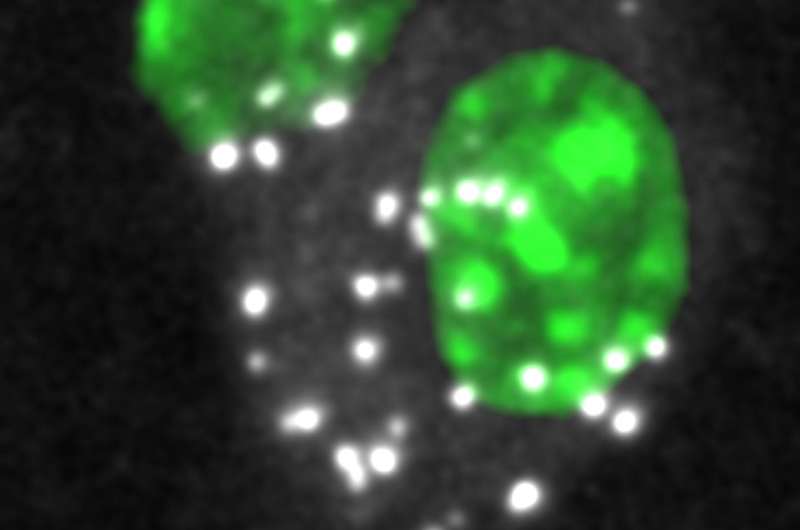Multiple sclerosis: Newly discovered signal mechanism causes T cells to turn pathogenic

Multiple sclerosis is an autoimmune disease in which the body's immune system attacks the patient's own cells. In this case, modified T cells destroy the myelin sheath surrounding nerve cells. Myelin protects the neural pathways and is thus essential to the ability of nerve cells to transmit information.
Which areas in the body are targeted by T cells and the impact they will have depends on various factors. In a previous study, Thomas Korn, Professor for Experimental Neuroimmunology at TUM, demonstrated that a substance known as interleukin 6 (IL-6) plays an important role in instructing T cells to cause damage to myelin sheaths in the central nervous system. The T cells are turned pathogenic in the lymph nodes, where they encounter a certain type of dendritic cells. Signals from the dendritic cells prime them to trigger immune reactions in other parts of the body. In the case of foreign antigens, for example components of viruses or bacteria, this is useful, as they can then be eliminated from the tissue. However, when pathogenic T cells recognize autoantigens, i.e. elements of the body's own substances such as the myelin sheath, these T cells trigger an autoimmune disease.
When dendritic cells not only signal myelin as a "target substance", but also secrete the messenger substance IL-6, a sort of molecular switch is flipped in the T cells. This causes them to become pathogenic, and thus to have particularly harmful effects on tissues.
"However, there was a major problem with this seemingly clear link," says Thomas Korn. "The T cells do not always become pathogenic when IL-6 is secreted." Together with a research group led by Dr. Ari Waisman, the head of the Institute for Molecular Medicine at the University Medical Center in Mainz, Korn and his team have found an explanation for this phenomenon. "The decisive factor is not only whether the dendritic cells provide an IL-6 signal to T cells," says Ari Waisman. "It's also how they do it."
A third way
Previously, dendritic cells were known to communicate IL-6 to T cells in two ways. First, they can secrete the messenger substance into their surroundings. The molecules are soluble and form a cloud in close proximity to the dendritic cell. Second, in a process known as trans-signaling, soluble IL-6 and the soluble IL-6 receptor can form a complex that can trigger a signal in certain responder cells. Korn and Waisman have discovered that IL-6 does not trigger the decisive change in the T cells in either of those cases. Instead they identified a third way: IL-6 can also be displayed on the cell surface of dendritic cells and thus be directly presented to T cells. Korn and Waisman refer to this transmission mode as cluster signaling, as it involves the formation of clusters of dendritic cells and T cells. What sets this "third" IL-6 signaling mode apart is that the T cell receives the IL-6 signals from the dendritic cell almost simultaneously with other signals. This temporal proximity probably causes the T cell to become highly aggressive and efficient in attacking its target antigen.
Teams conducting research into treatment methods for various chronically inflammatory autoimmune diseases are already using the link between IL-6 and pathogenic T cells today. The basic idea is that blocking IL-6 signaling will also prevent the formation of pathological cells. This applies not only to multiple sclerosis, but also to rheumatoid arthritis, another condition caused by errors in the immune system. "The results of our research can clarify why some therapies are successful and why others are not," says Thomas Korn. "The various drugs often block only one signaling method. If transmission through dissolved IL-6 is prevented, cluster signaling may still be possible," adds Ari Waisman.
More information: Sylvia Heink et al, Trans-presentation of IL-6 by dendritic cells is required for the priming of pathogenic TH17 cells, Nature Immunology (2016). DOI: 10.1038/ni.3632



















